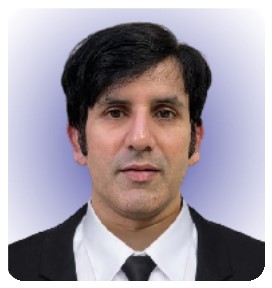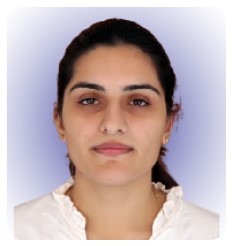Clinical presentation, evaluation and treatment planning in patients with musculoskeletal venous malformations.
Dr. Nishit Palo, Department of Orthopedics, Santosh Medical College and Hospital, Ghaziabad, Uttar Pradesh, India. E-mail: nishit_palo@yahoo.com
Introduction: Venous malformations are rare lesions of unknown etiology, with a reported incidence of 0.8–1%. Patients with inexorable growth and expansion of vascular malformations, or“ have an unpredictable clinical course and a wide range of presenting symptoms. Often, they are erroneously diagnosed and inadequately treated due to their rarity and lack of expertise among clinicians. author’s information, this is the first report of diffuse venous malformations with multiple phleboliths involving various compartments of the upper extremity in children.
Case Report: The uthors discuss the clinical presentation, evaluation, and treatment over 8 months of slow-flow venous malformations with phleboliths in an11-year-old girl presenting with multiple painful swellings throughout her right upper extremity. The right upper extremity had multiple swellings over the right hand, forearm, arm, and shoulder region involving multiple compartments. The digital swellings had bluish discoloration, indicating a vascular nature. Blood tests revealed a raised D-dimer level (2.42 mg/L). Radiographs, Ultrasound, Magnetic resonance imaging, and CT angiography suggested a slow-flow venous malformation. The excisional biopsy confirmed the diagnosis. Ultrasound-guided Sclerotherapy with the Sclerotherapy with Adjunctive Stasis of Efflux Technique was performed for other lesions. Sodium Tetradecyl Sulfate (60 mg/2 mL; 0.5mL) was used in each lesion. Post-intervention, at 6 months follow-up, cosmetic appearance improved drastically, with the hands benefitted most. Parents were satisfied with overall outcome. Sclerotherapy was stopped after 4 cycles.
Conclusion: Ultrasound-guided sclerotherapy is effective in treating venous malformations. The ideal result is seen after 4–5 sittings. Sclerotherapy must be performed in the operating theatre under sedation or appropriate anesthesia with resuscitation equipment at the ready disposal. Excision is reserved for bigger superficial lesions.
Keywords: Vein, Child, Sclerotherapy with Adjunctive Stasis of Efflux, India, Scerotherap.
Venous malformations are rare lesions of unknown etiology, with a reported incidence of 0.8–1% [1]. Believed to be “embryologically originated mistakes of vascular morphogenesis,” they present as localized or diffuse structural abnormalities [2] of affected vascular territory. Patients with inexorable growth and expansion of vascular malformations have an unpredictable clinical course and a wide range of presenting symptoms [3]. Often, they are erroneously diagnosed and inadequately treated due to their rarity and lack of expertise among clinicians [4]. Slow-flow venous malformations occasionally present with “phleboliths,” considered a complication [5]. These are intravascular calcifications forming within the malformation due to venous stasis. Various studies have reported phlebolith associated with venous malformations, but they are mostly restricted to oral and maxillofacial regions such as the buccal fat pad [5], maxillofacial region [6], submandibular region [7, 8], and salivary gland [9]. Malformations grow rapidly with advancing age; thus, it is crucial to evaluate them, establish a diagnosis, rule out malignancies, and treat them early, as their rapid growth may affect children’s social acceptability and the movements of affected limbs and joints. Children present with pain and discomfort due to expanding blood collection and limb heaviness. For the author’s information, this is the first report of diffuse venous malformations with multiple phleboliths involving various compartments of the upper extremity in children. The authors discuss clinical presentation, evaluation, and treatment over 8 months in an 11-year-old girl presenting with multiple painful swellings throughout her right upper extremity and hand.
An 11-year-old girl was brought to us by relatives with complaints of pain in the right upper extremity with restricted elbow and hand movements for 4 weeks. There was a history of injury on the right hand six years ago. The girl was normal-built for her age. The swelling had not been present since birth; the first swelling appeared in the dorsum of the hand. This was observed after the injury; later; the swelling increased in size and became painful; subsequently, multiple swellings appeared, initially painless. Gradually, all swellings grew to their present size, with the ones in the hands and arms being painful. She was not able to freely move her wrist or elbow due to the increased weight of her upper extremity. The right upper extremity had multiple swellings over the right hand, forearm, arm, and shoulder region involving multiple compartments (Fig. 1).
These cases are rare citing in orthopedics outdoor department, especially in the pediatric population. In our case, the patient was referred to us by Pediatric Department. On first look, the multiple swellings involved multiple compartments of the arm, elbow, forearm, wrist, and hand; thus, they could not be attributed to any particular dermatome, muscle, or joint. The lesion in the hand was superficial and tense with bluish discoloration, indicating blood within, but the ones in the forearm, arm, and shoulder were deep; only a bulge could be appreciated. Clinically, the lesions looked vascular; the patient’s attendants were counseled to get a specialist opinion from a high-volume pediatric hospital, a vascular or plastic surgeon, first, but they were unable to get a clear picture. After a delay of 2 months from the initial presentation, parents requested the orthopedic team treat the child. Clinicians are unaware of the treatment of musculoskeletal venous malformations due to their rarity. Although various reports from dental and maxillofacial specialties have discussed the treatment of oral venous malformations and phleboliths, their suggested options include observation, surgical excision, and laser therapy in a few patients. The musculoskeletal and global involvement of the upper extremity makes this case rare. In these rare conditions, no definite treatment algorithm has been suggested, and reports are limited to clinical presentation and diagnostics. Phlebolith, or “Calcified Thrombii,” as a characteristic feature of a vascular lesion was first reported in the splenic vein [7], with the submandibular region being the commonest site [8]. Changes in Blood flow dynamics or vascular stasis within the dilated vascular spaces are primarily responsible for phlebolith formation. Subsequently, thrombus, its organization, dystrophic calcification [6], and lamellar fibrosis follow [9]. Sano et al., through X-ray diffraction and Infrared spectrometry, demonstrated Calcium carbonate and Calcium Phosphate as major phlebolith stone components [8, 11]. On the cut section, phleboliths are laminated with a radiopaque center with concentric rings of calcification, giving them an “onion skinning-like” appearance. According to the ISSVA 2014 Guidelines, Venous Malformations are classified as “Simple Vascular Malformations” and “Slow Flow” considering blood flow characteristics [12]. They demonstrate a slow, steady growth pattern that is commensurate with the growth of the child, and further, they also never involute. Angiography is the best diagnostic modality to confirm the diagnosis and establish the extent of the disease. While treating pure venous lesions, clinicians must evaluate the patient for localized intravascular coagulation (LIC) and coagulopathy. Sclerotherapy can sometimes aggravate factors favoring the LIC and Coagulopathy cascade [10]. Compression garments, low molecular-weight heparin or direct anti-Xa agents are helpful in these patients [13, 14]. These patients are also likely to develop painful phleboliths, thrombophlebitis, Thromboembolic events [15, 16], or a full-blown DIC. The sclerosant is a heavy molecule that, when injected, can be painful and make the patient uncomfortable. Therefore, sclerotherapy procedures must be performed in the operating theatre under sedation or appropriate anesthesia with resuscitation equipment at the ready disposal. The history of injury and appearance of swelling in our patient appear to be coincidental. We believe the swelling must have been present since a younger age, but it was observed only after the trauma incident when people were more attentive and observant, especially in people living in rural areas. Our patient could now play with her friends like other children. She can now attend school and wear regular clothing without people bothering her about her clinical condition. Her overall social acceptability improved. We thank our patient for her condition, and the data will help clinicians treat their patients in a better way and thereby benefit society on a larger scale.
Ultrasound-guided sclerotherapy is effective in treating venous malformations. The ideal result is seen after 4–5 sittings. Sclerotherapy must be performed in the operating theatre under sedation or appropriate anesthesia with resuscitation equipment at the ready disposal. Excision is reserved for bigger superficial lesions.
Patients with vascular (venous) malformations in the extremities do visit orthopedic clinics. Mostly children, they should be properly evaluated clinically and with diagnostics. A biopsy establishes a diagnosis and rules out malignancies. Sclerotherapy can be performed by Orthopedic surgeons. Better results are achieved if the procedure is done under ultrasound guidance. Cosmetic Appearance dictates the end point of treatment.
References
- 1.Tasnádi G. Epidemiology and etiology of congenital vascular malformations. Semin Vasc Surg 1993;6:200-3. [Google Scholar]
- 2.Mulliken JB. Vascular Birthmarks: Hemangiomas and Malformations. Philadelphia, PA: W.B. Saunders; 1988. p. 24-37. [Google Scholar]
- 3.Lee BB, Antignani PL, Baraldini V, Baumgartner I, Berlien P, Blei F, et al. ISVI-IUA consensus document diagnostic guidelines of vascular anomalies: Vascular malformations and hemangiomas. Int Angiol 2015;34:333-74. [Google Scholar]
- 4.Markovic JN, Shortell CK. Venous malformations. J Cardiovasc Surg (Torino) 2021;62:456-66. [Google Scholar]
- 5.Saha A, Mohapatra M, Patra S, Saha K. Phlebolith in arteriovenous malformation in buccal fat pad masquerading sialolith: A rare case report. Contemp Clin Dent 2015;6:254-6. [Google Scholar]
- 6.Orhan K, Icen M, Aksoy S, Avsever H, Akcicek G. Large arteriovenous malformation of the oromaxillofacial region with multiple phleboliths. Oral Surg Oral Med Oral Pathol Oral Radiol 2012;114:e147-58. [Google Scholar]
- 7.Sato S, Takahashi M, Takahashi T. A case of multiple phleboliths on the medial side of the right mandible. Case Rep Dent 2020;2020:6694402 . [Google Scholar]
- 8.Sano K, Ogawa A, Inokuchi T, Takahashi H, Hisatsune K. Buccal hemangioma with phleboliths. Report of two cases. Oral Surg Oral Med Oral Pathol 1988;65:151-6. [Google Scholar]
- 9.Kanaya H, Saito Y, Gama N, Konno W, Hirabayashi H, Haruna S. Intramuscular hemangioma of masseter muscle with prominent formation of phleboliths: A case report. Auris Nasus Larynx 2008;35:587-91. [Google Scholar]
- 10.Legiehn GM. Sclerotherapy with adjunctive stasis of efflux (STASE) in venous malformations: Techniques and strategies. Tech Vasc Interv Radiol 2019;22:100630. [Google Scholar]
- 11.Dempsey EF, Murley RS. Vascular malformations simulating salivary disease. Br J Plast Surg 1970;23:77-84. [Google Scholar]
- 12.Steiner JE, Drolet BA. Classification of vascular anomalies: An update. Semin Intervent Radiol 2017;34:225-32. [Google Scholar]
- 13.Ardillon L, Lambert C, Eeckhoudt S, Boon LM, Hermans C. Dabigatran etexilate versus low-molecular weight heparin to control consumptive coagulopathy secondary to diffuse venous vascular malformations. Blood Coagul Fibrinolysis 2016;27:216-9. [Google Scholar]
- 14.McRae MY, Adams S, Pereira J, Parsi K, Wargon O. Venous malformations: Clinical course and management of vascular birthmark clinic cases. Australas J Dermatol 2013;54:22-30. [Google Scholar]
- 15.Hung JW, Leung MW, Liu CS, Fung DH, Poon WL, Yam FS, et al. Venous malformation and localized intravascular coagulopathy in children. Eur J Pediatr Surg 2017;27:181-4. [Google Scholar]
- 16.Leung YC, Leung MW, Yam SD, Hung JW, Liu CS, Chung LY, et al. D-dimer level correlation with treatment response in children with venous malformations. J Pediatr Surg 2018;53:289-92. [Google Scholar]










